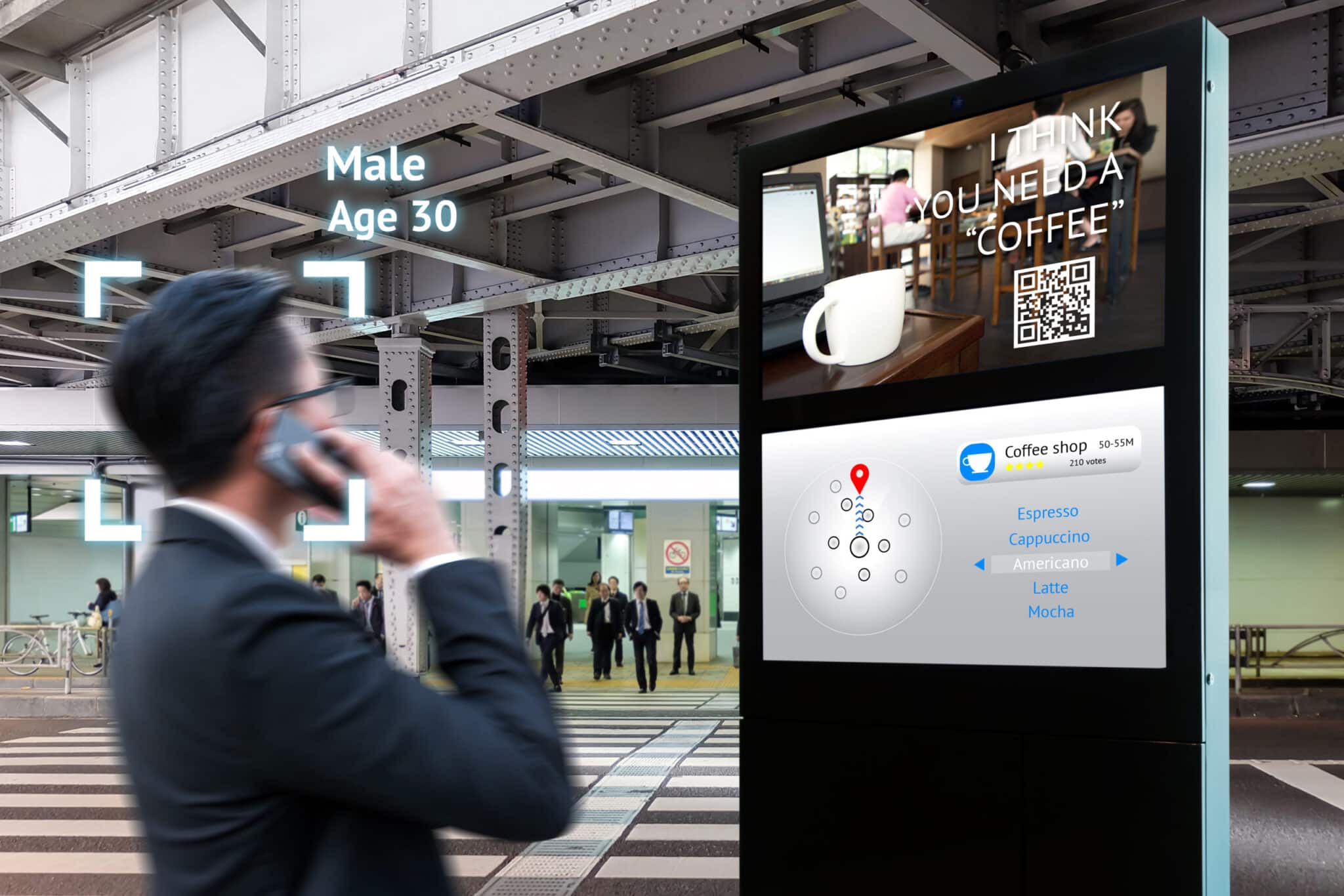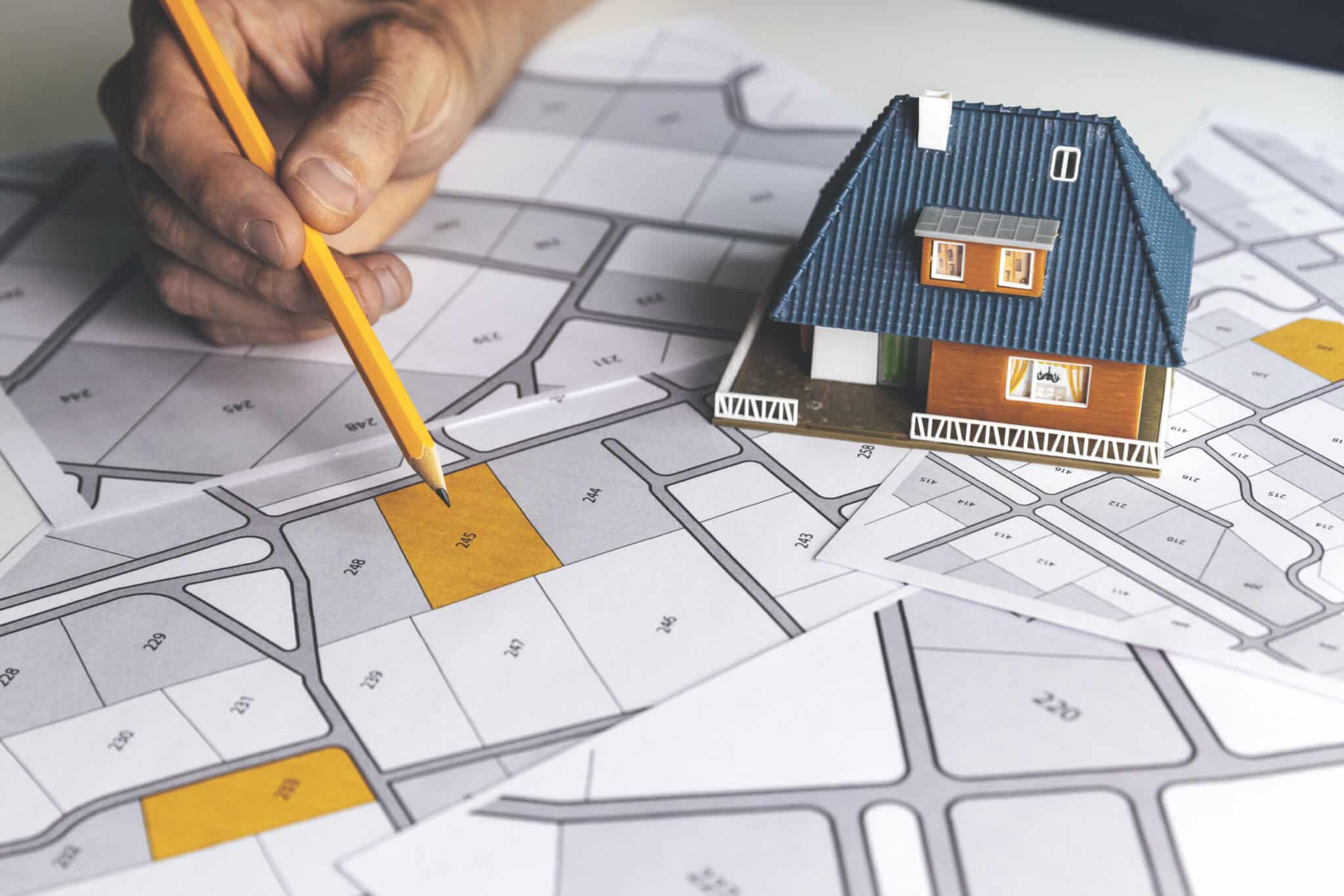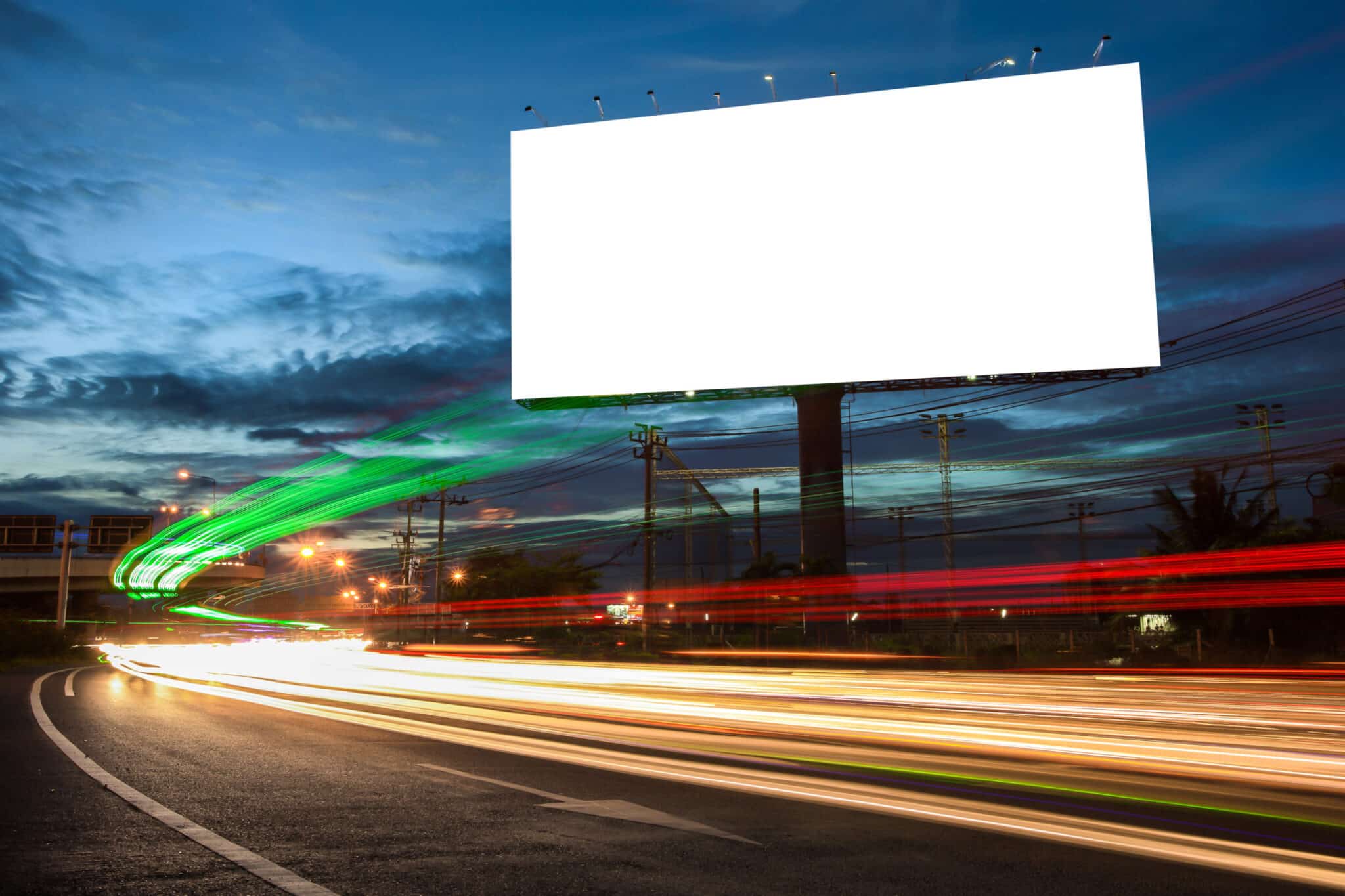When it comes to advertising, billboard space is one of the most coveted and expensive options around. But what does billboard advertising cost, exactly? And how can you ensure you’re getting the best value for your money?
This article will look at billboard advertising rates and what you can expect to pay for this ad campaign.
So, How Much Does Billboard Advertising Cost?
The cost of billboard advertising varies significantly by location. For instance, billboard advertising in New York City can cost upwards of $20,000 per month on the high end, while the average monthly billboard ad cost in Dallas is around $2,400.
In some states, billboard ads are cheaper than others – for example, billboard ads in Montana run at about $1,000 per month on average.
So when planning billboard advertising campaigns, consider the location and associated costs of billboard ads in that region.
Average Monthly Cost of Billboard Advertising By State
Below, we list each state’s average cost per month of a billboard in 2023.
Alabama
- $1,513/month
Alaska
- $2,075/month
Arizona
- $2,350/month
Arkansas
- $1,550/month
California
- $2,550/month
Colorado
- $1,675/month
Connecticut
- $2,825/month
Delaware
- $1,475/month
Florida
- $2,350/month
Georgia
- $2,075/month
Hawaii
- $1,950/month
Idaho
- $1,050/month
Illinois
- $2,725/month
Indiana
- $1,475/month
Iowa
- $1,375/month
Kansas
- $1,313/month
Kentucky
- $1,975/month
Louisiana
- $1,475/month
Maine
- $2,187/month
Maryland
- $1,675/month
Massachusetts
- $2,187/month
Michigan
- $1,788/month
Minnesota
- $1,800/month
Mississippi
- $1,150/month
Missouri
- $1,775/month
Montana
- $913/month
Nebraska
- $1,213/month
Nevada
- $1,865/month
New Hampshire
- $2,675/month
New Jersey
- $1,930/month
New Mexico
- $1,213/month
New York
- $3,050/month
North Carolina
- $1,775/month
North Dakota
- $950/month
Ohio
- $1,750/month
Oklahoma
- $1,681/month
Oregon
- $2,100/month
Pennsylvania
- $2,141/month
Rhode Island
- $1,200/month
South Carolina
- $1,563/month
South Dakota
- $1,021/month
Tennessee
- $1,513/month
Texas
- $2,225/month
Utah
- $1,894/month
Vermont
- $2,075/month
Virginia
- $1,129/month
Washington
- $1,750/month
West Virginia
- $1,188/month
Wisconsin
- $1,463/month
Wyoming
- $1,075/month
Cost Factors that Affect Monthly Spend
In addition to location, several other factors can impact billboard ad costs.
These include the following:
- Area demographics
- Impressions
- Circulation

Area Demographics
Area demographics are essential in determining the monthly cost of having a billboard in 2023, as they reveal critical information about the local population and their spending habits.
Furthermore, the amount of competition for ad space in an area can also influence the cost of having a billboard.
Advertisers may need to bid higher to access prime locations if there are many other billboards around. If there are only a few billboards in the area, advertisers may be able to negotiate lower prices.
The location also matters when it comes to area demographics and billboard pricing. For instance, if a billboard is placed near an airport, it may fetch higher costs than one set further away, as travelers passing through may be more receptive to advertisements.
Similarly, nearby attractions such as malls or stadiums can provide more visibility and demand for advertising space which could result in higher costs for billboards positioned close by them.
Impressions
Impressions are one of the most significant cost factors in each state that determine the monthly spending for a billboard in 2023. Impressions refer to the number of eyes that see the billboard during its rotation.
This means that billboards with more impressions will be more expensive than those with fewer impressions.
In general, higher traffic areas will have more impressions and, therefore, a higher cost for a billboard.
Additionally, location is vital when making sure your billboard has enough impressions. Advertising close to highways, busy city streets, or anywhere people may be passing by frequently can help ensure you get value from your ad placement.
Circulation
An area’s circulation directly impacts its demand and, thus, affects how much a company has to pay for signage in that region. For example, suppose an area has a higher population density and better transport links. In that case, it is likely to have a higher demand for advertising space and would require a higher fee than an area with less footfall.
Furthermore, certain areas may contain establishments such as stadiums or landmarks that can attract more attention from passersby; this, too, could mean that companies have to pay more for their signs in those locations.
The type of environment also counts – urban areas may command higher rental costs than rural regions simply due to increased consumer spending power and purchasing habits within cities.
In some cases, competitors or other large businesses in an area can also create competition for billboard space, driving up fees for companies wishing to rent out space here.
Ultimately, by understanding the circulation levels within any given area, businesses can better assess how much they should expect to pay for their signs monthly and ensure their budgeting covers all necessary costs accordingly.
Advantages and Disadvantages of Billboard Advertising
When it comes to billboard advertising, there are both advantages and disadvantages that must be considered.
Advantages
Billboard advertising has many advantages.
One of the most significant benefits is that it can reach many potential consumers quickly, as the signage is typically placed in visible public areas like highways, busy streets, and intersections.
This makes it an ideal form of marketing for companies with a broad target audience.
Billboard advertising is also cost-effective and can be utilized long-term with minimal upkeep costs.
With effective placement, these signs can be seen by thousands of people each day, eventually leading to increased brand recognition and visibility for businesses.
Compared to digital marketing methods such as social media advertising or pay-per-click campaigns, there’s less competition in billboard advertising since physical space is limited and more exclusive than online spaces.
Unlike TV commercials or radio advertisements that require viewers and listeners to take action to see or hear them (such as tuning into a specific channel), billboards are passively discovered by viewers without any extra effort.
This makes them an easy way to increase the reach of your marketing campaigns without additional expenses for broadcasting or other fees associated with traditional media outlets.
Overall, buying a billboard is a marketing strategy that you should not overlook for your business.
Disadvantages
Before investing in this form of advertising, the disadvantages of billboard advertising should also be considered. One of the significant drawbacks is the cost, as billboard advertising is often quite expensive.
In addition to the costs associated with renting a billboard space, there is also the cost of designing, producing, and installing a creative design. This can be an even greater cost if you decide to opt for digital billboards, which require ongoing maintenance.
A second disadvantage is that billboards have limited reach since they are usually only visible from one direction or within a certain radius.
Furthermore, people’s attention span is typically very brief when passing by a billboard. Some estimates suggest you have around three seconds to capture someone’s attention before they move on to the next thing. This can make it difficult for advertisers to make an impact with their messaging unless their message is particularly compelling or funny.
Additionally, since billboards are placed outdoors and exposed to extreme weather conditions, there may be damage or fading over time which needs to be accounted for when planning a campaign.
In a lot of ways, marketing has changed for the better and there is less reliance on offline advertising techniques. However, billboard advertising is still a great way to reach customers if your business can afford it.
How to Choose a Location
Regarding billboard advertising, location is one of the most critical aspects.
First and foremost, you should always select billboard locations that are highly visible from major roads or highways so that your message reaches as many people as possible.
It’s essential to keep the following factors in mind:
- Destinations of Traveler
- How Close is the Billboard to the Road
- Speed of Traffic

Destinations of Traveler
A billboard in an area with high foot traffic can offer maximum exposure, so choosing locations near popular attractions is ideal. However, it’s important to factor in the type of traveler who visits the area when selecting the perfect spot.
For example, a beach town may feature visitors looking for relaxation or fun activities, while a business district will draw professionals and corporate travelers. Knowing who you are targeting can help determine whether or not a particular location is appropriate for your billboard.
For instance, if you are advertising an upscale hotel or travel destination, you may want to find a more affluent area rather than targeting a less exclusive community that attracts more budget-minded travelers.
Additionally, consider seasonal variations when deciding on where to place your billboard. A ski resort may attract more visitors during the winter compared to the summer months, so you’ll need to adjust your strategy accordingly and choose a location with higher visibility when those peak times occur.
How Close is the Billboard to the Road
When determining the best location for a billboard, it is essential to consider how close it is to the road. If you want your billboard to be seen, the closer it is to the road, the better.
The more visible and accessible your billboard is, the more likely people will view and remember your message.
It’s important that drivers can easily see and recognize your advertisement from a distance without distraction or obstruction.
Speed of Traffic
Traffic speed is also a crucial factor to consider when selecting billboard locations. If the billboard is located in an area with high speeds, people may not have enough time to read and understand your message before it is out of sight.
On the other hand, if you choose a location with slower-moving traffic, such as an interstate highway, people may have more time to read the billboard and absorb your message, thus increasing its effectiveness.
Who Should Use Billboard Advertising?
Billboard advertising can be an excellent tool for companies of all sizes and industries.
It is especially beneficial for those looking to grab people’s attention with an eye-catching message or image, as billboard ads are designed to create a significant impact quickly.
Some examples that would benefit from billboard advertising include:
- A product that’s relevant to a mass audience
- A service that’s relevant to a mass audience
- A product/service that’s easy to understand
A Product That’s Relevant to a Mass Audience
If you’re trying to promote a product or service that appeals to a broad audience, billboard advertising can help boost your sales and grow your business.
For example, billboard ads can spread the word about your business and draw more customers if you have a new restaurant opening in the area.
A Service That’s Relevant to a Mass Audience
Billboard advertising is also great for services that apply to many people.
For instance, if you offer financial advice or tax services, billboard ads can be used to reach potential clients in your area and let them know about the services you provide.
A Product/Service that’s Easy to Understand
Billboard advertising is also a great way to communicate a message or promote a product or service that’s easy to understand.
For example, billboard ads can quickly spread the word and draw attention to your event if you’re promoting an event such as a concert or festival.
Billboard Advertising Wrap Up
Ultimately, billboard advertising can reach a wide audience with your message, provided you select the correct locations.
Factors such as traveler destinations, traffic speed, and billboard proximity to the road should all be considered when deciding on billboard locations.
Finding the right spots and crafting an effective billboard ad can boost your sales and grow your business with billboard advertising.
Do you have any questions about billboard advertising? Let us know in the comments below!
Frequently Asked Questions
Yes, billboards are typically leased on a monthly basis. Depending on the type of billboard and its location, rates usually range from $1,000 to more than $20,000 per month. Generally, billboards in major metropolitan areas cost more than those in rural areas.
A billboard can also factor into the cost by the time you lease, as some billboard leases offer discounts for longer-term contracts. Additionally, many billboard companies have seasonal specials and offer discounted rates during certain times of the year.
Yes, billboards come in a variety of sizes depending on the provider. Standard-size billboards usually range from 14 feet by 48 feet to 10 feet by 40 feet. Other sizes are available, such as bulletins ranging from 12 feet by 24 feet to 8 feet by 16 feet.
Yes and no. While you can purchase a billboard to put up yourself, it is much more advisable and cost-effective to hire out the installation process.
Billboard companies will likely be able to provide you with the resources you need for installation and maintenance, as well as help with obtaining the necessary permits. Additionally, most billboard advertising companies will include installation in the cost of their services, so you don’t have to worry about extra expenses.
Outdoor advertising companies like Outfront Media, Lamar Advertising, and Clear Channel Outdoor typically own billboards. These companies own physical billboard structures and the right to lease ad space. The companies charge advertisers for the use of their assets to generate revenue.
Yes, billboards can be a very profitable form of advertising. billboard companies generate revenue by charging advertisers the right to display their message on a billboard at a particular location. The amount an advertiser pays to rent space on a billboard depends on many factors, such as the size and visibility of the billboard, the traffic count near it, how long the ad will be displayed, and the length of time for which it is rented. According to Lamar Advertising Company, billboard advertising costs range from $250 to $14,000 per month in the United States. Additionally, many companies offer discounts on long-term leases that can reduce a company’s overall cost.


